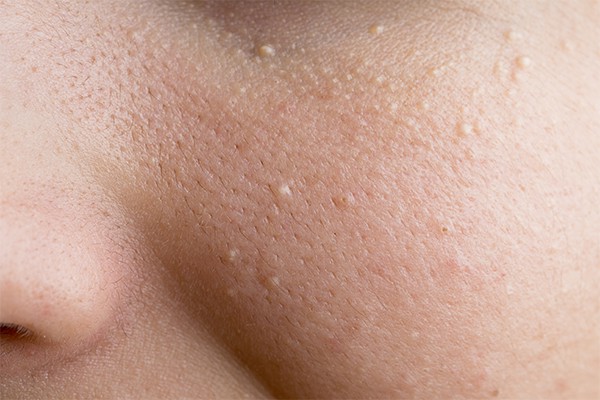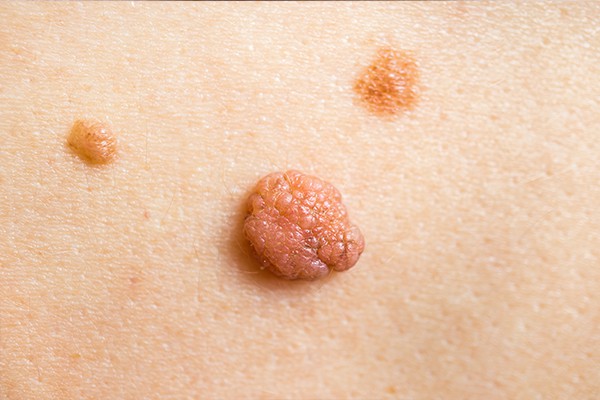
Oil Seeds, Skin Tags,
and Mole Removal
Removal of Oil Seeds, Skin Tags & Moles
Moles, oil seeds, and skin tags are common skin conditions that can occur on any part of the body. However, they are more commonly found on the neck, eyelids, and underarms. While most of these skin conditions are harmless, people often choose to remove them as they can be unsightly and may cause discomfort. There are different treatment options available for mole, oil seed, and skin tag removal but carbon dioxide (CO2) laser treatment remains as one of the most popular choices due to its benefit of having a shorter recovery time.
What Are They? – Oil seeds, Skin tags, Moles

Oil Seeds
Oil seeds, also known as milia are tiny, white, bead-like cysts that are formed when keratin becomes trapped under the skin’s surface. Oil seeds primarily appear underneath the eyes, on the cheeks, the nose, and the chin.

Skin Tags
Skin tags, also known as acrochordons are painless, soft, skin-coloured growths connected to the skin by a stalk. The stalk plays a major role in nourishing the skin tag with nutrient-rich blood. Skin tags mostly occur in areas that are subject to a lot of friction such as the neck, the underarms, the groin, and under the breasts.

Moles
Moles, also called melanocytic nevi are common benign, pigmented skin growths that are formed when numerous pigment cells grow together in clusters. Moles primarily occur in sun-exposed areas. There are different types of moles namely, congenital moles, dysplastic nevi, and common moles. Moles tend to appear during childhood and reach a maximum number at the age of 30-40. They do not usually cause symptoms but can be cosmetically disturbing depending on their size and location.
Laser Removal for Oil Seeds, Skin Tags & Moles
Carbon dioxide laser is a type of gas laser used to remove moles, skin tags, and oil seeds safely with minimal discomfort. CO2 laser targets the growths precisely and removes them without affecting the surrounding tissue. This precise and gentle way of removing moles prevents unnecessary damage to the skin surrounding the skin growth, thus reducing the possibility of scarring after treatment. Also, since laser removal is not a surgical procedure, it is safe, non-invasive, and convenient. CO2 laser treatment ensures rapid recovery.
How It Works?
During laser removal, a small device is used to emit an invisible infrared beam. These beams penetrate the topmost skin layers to create very tiny lesions that in turn promote collagen production. Collagen helps the skin replace damaged skin cells with new healthy cells.
Before the Procedure
Before the procedure, the area will be cleaned with an antiseptic solution. Depending on the type, site, and size of the skin condition, a specific type of anaesthesia will be administered. Very small lesions may not require anaesthesia.
After the Laser Treatment
After the laser treatment, topical antiseptic cream will be provided and daily application after cleansing is recommended. It is advisable to apply sunscreen three times a day as from day one after the treatment to protect the skin from hyperpigmentation. Small scabs will form towards the end of the skin’s recovery and eventually fall off, revealing new and healthy skin cells.
Other Types of Skin Growths Suitable for Laser Removal
Even though moles, oil seeds, and skin tags are the most common types of skin growths requested for removal, CO2 laser treatment can also be used to remove other types of skin growths such as:
- Seborrheic keratoses
- Warts
- Xanthelasma
- Cherry angioma or red moles
